Why I March(ed) Today
At brunch over the holidays, a friend and I were reflecting on the year. It was a big one: #MeToo and all that came with it, the legacy of the Women's Movement--"I don't march," she said. "What good does that really do?""Showing up really matters. In 2016, it was electric. People--across the world--had had a breaking point, and they knew they were not alone. Seeing and being amongst a virtual sea of pink hats in planes, buses, trains, on the street--it was incredible. For the first time, I was seeing women in the world not as a minority. I can't really put into words the emotion of that day. You could physically feel kindness and empathy, everywhere you went. You can never go back to a "before" after experiencing something like that. Change, real change, happens from that kind of event.""Okay," she conceded. "You have a point. But what does it mean now?"I have given serious consideration to that question. This year, I reached out to a few march-y galpals to see if they were available this weekend to show up for the cause. Personally, I'm burnt out on marches, but I remembered how important it was to show up the first time, and even the second time. I was curious what this year might look like.Responses? Several were out of town or skiing. Others were busy, demo'ing the bathroom, and another was helping her mother transition into an assisted living facility. All promised to wear their hats and #Represent. I had to get cat food and clean the windows myself, so I had put myself in rather a dilemma.On my way to run errands, I joined the march as it was just starting to move. The energy was low. The crowds were low. I didn't see as much pluck and cleverness in the signage this year. The tone was different. The sentiments, predictable.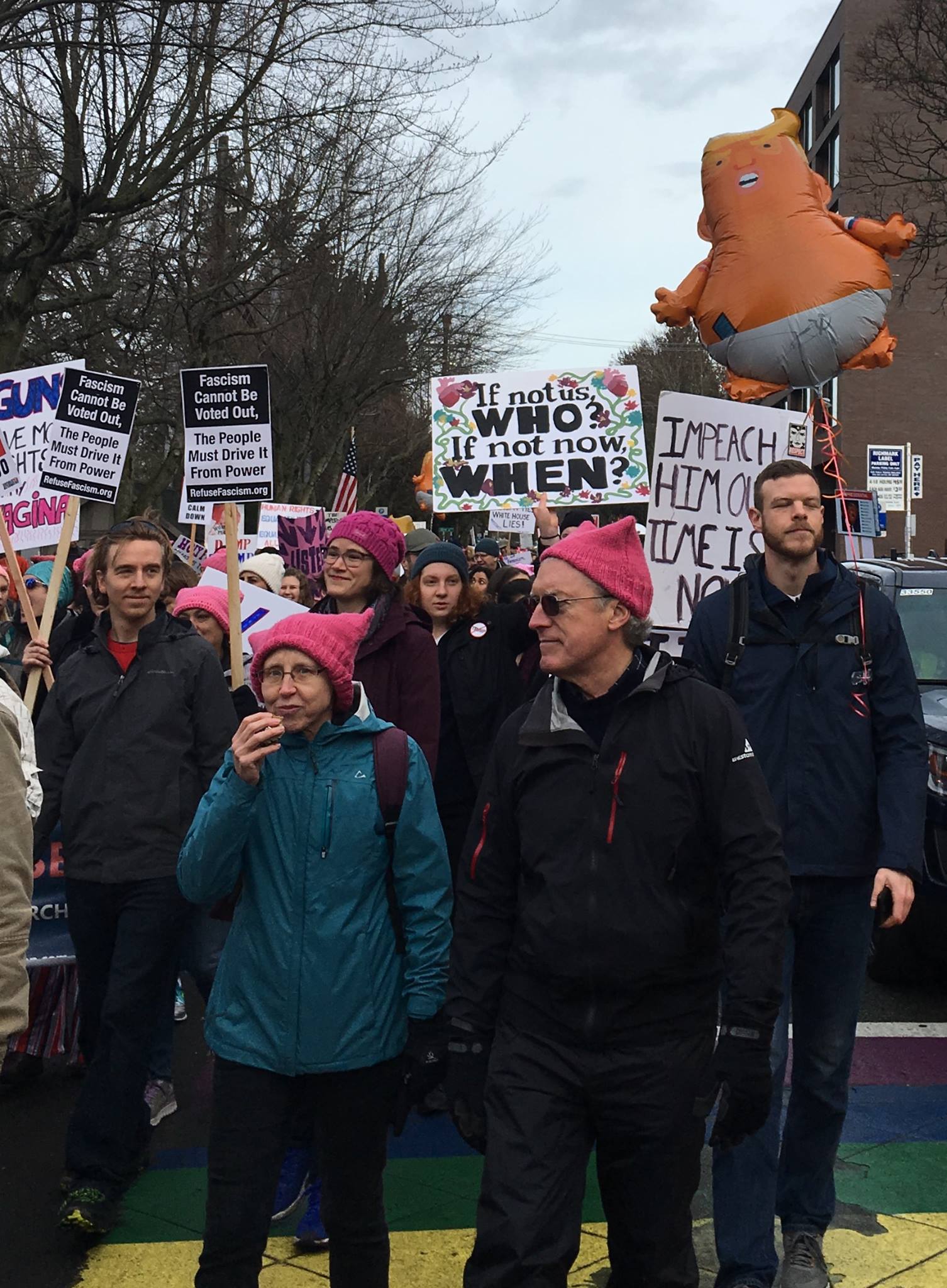 There were the costumes, now professionally made (probably specifically for protest marches). No matter, the red cloak has become an important symbol now, representative of just how much we can lose. Seeing them there was comforting.
There were the costumes, now professionally made (probably specifically for protest marches). No matter, the red cloak has become an important symbol now, representative of just how much we can lose. Seeing them there was comforting.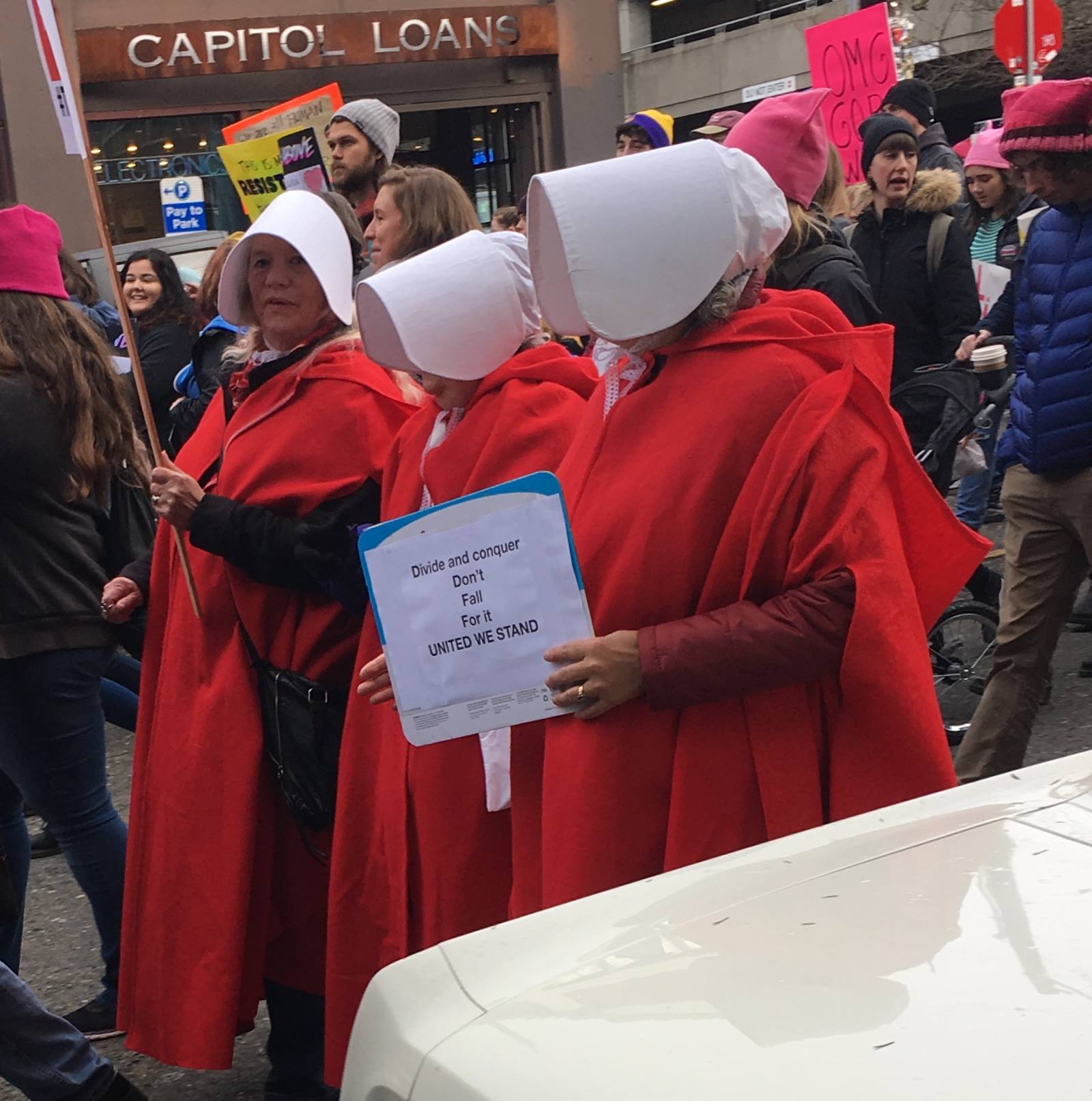 I spoke with a cop about crowd expectations."We're expecting 5-7,000," he said. "Way down from last year, or the first year when it was 30,000. That was fun. I don't know what it is this year. Maybe it's the weather.""Maybe people are tired," I replied. "I'm tired.""Yeah, well, stay strong. Have fun! It's good you came out."He meant it too. He was in full support of the march. That was cute to see.My personal favorite aspects of marches are:
I spoke with a cop about crowd expectations."We're expecting 5-7,000," he said. "Way down from last year, or the first year when it was 30,000. That was fun. I don't know what it is this year. Maybe it's the weather.""Maybe people are tired," I replied. "I'm tired.""Yeah, well, stay strong. Have fun! It's good you came out."He meant it too. He was in full support of the march. That was cute to see.My personal favorite aspects of marches are:
- clever signage. It illustrates the nuance of the protest. Marches are about one theme (in this case the idea that women's rights are human rights), but people live in their particulars and it's always interesting to me to understand those particulars better and see how much they matter.
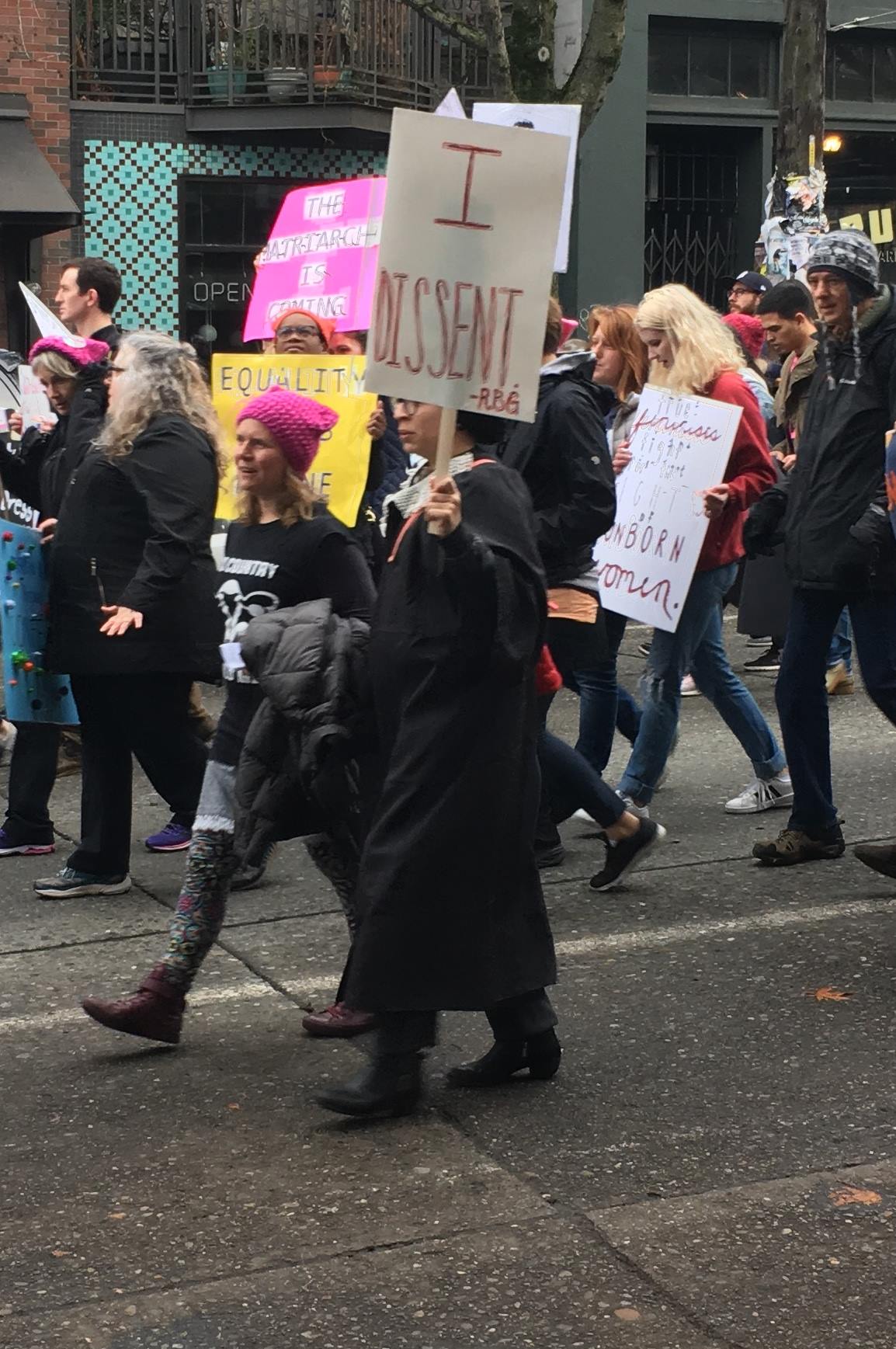
- children. I didn't grow up in a family or attend schools that were politically active. I didn't attend rallies, marches, or show up for groups that were generally upset. As a result, I didn't ever really feel that political issues impacted me much, and they didn't because I grew up in a very protected bubble. So I appreciate parents bringing their kids to events like this. I believe it is important to show up and have your voice heard and feel like they are part of something larger. People need to learn that as young as possible.
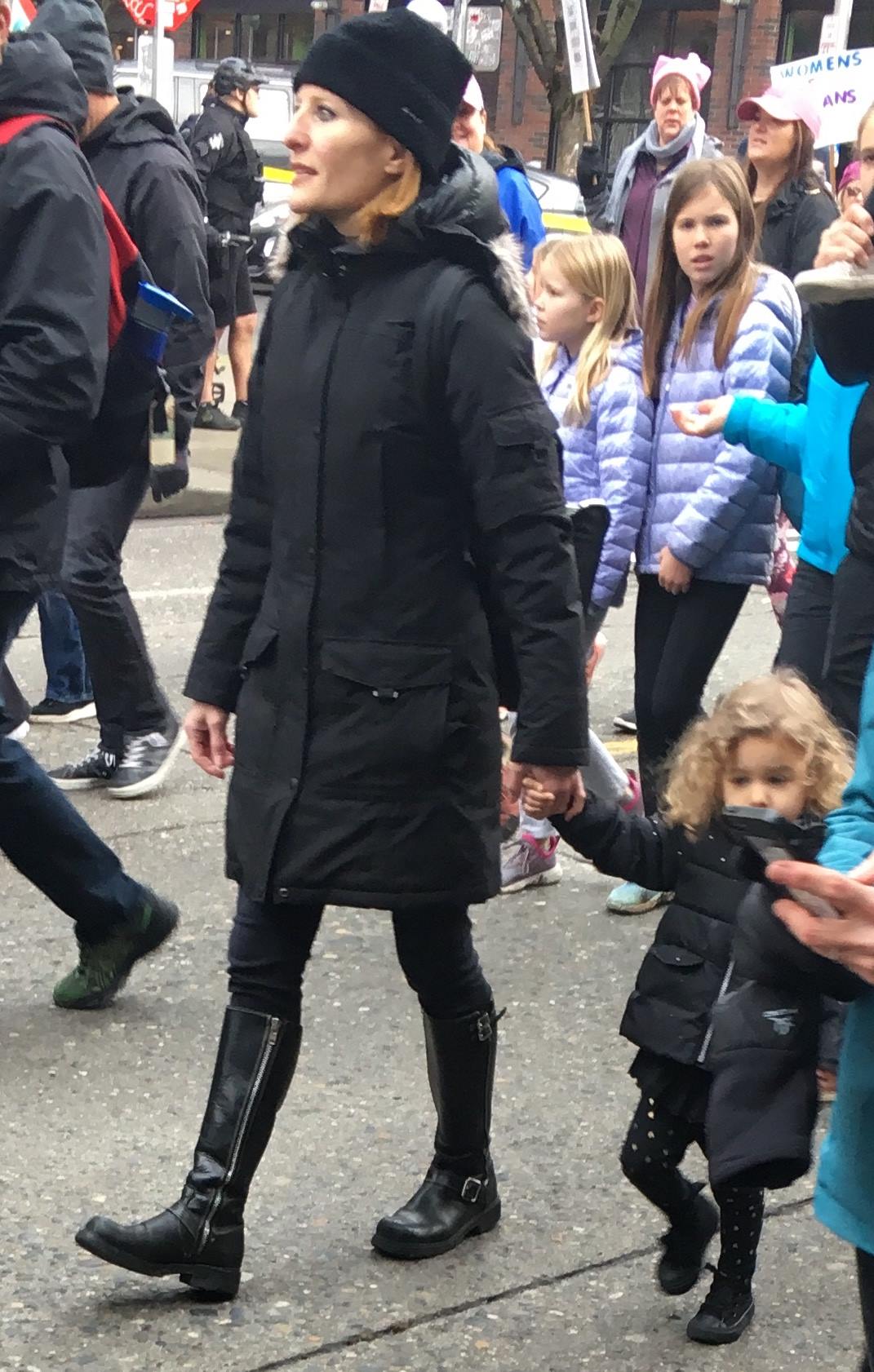
- engineers. There is nothing like an engineer with time to creatively express his/her voice. I was late with the photo because by then I was holding my double decaf mocha, but there was one couple with remote-controlled turkeys labeled Pence and one labeled Trump, each holding a sign saying "I'm with -->." You have to tip your hat to that one.
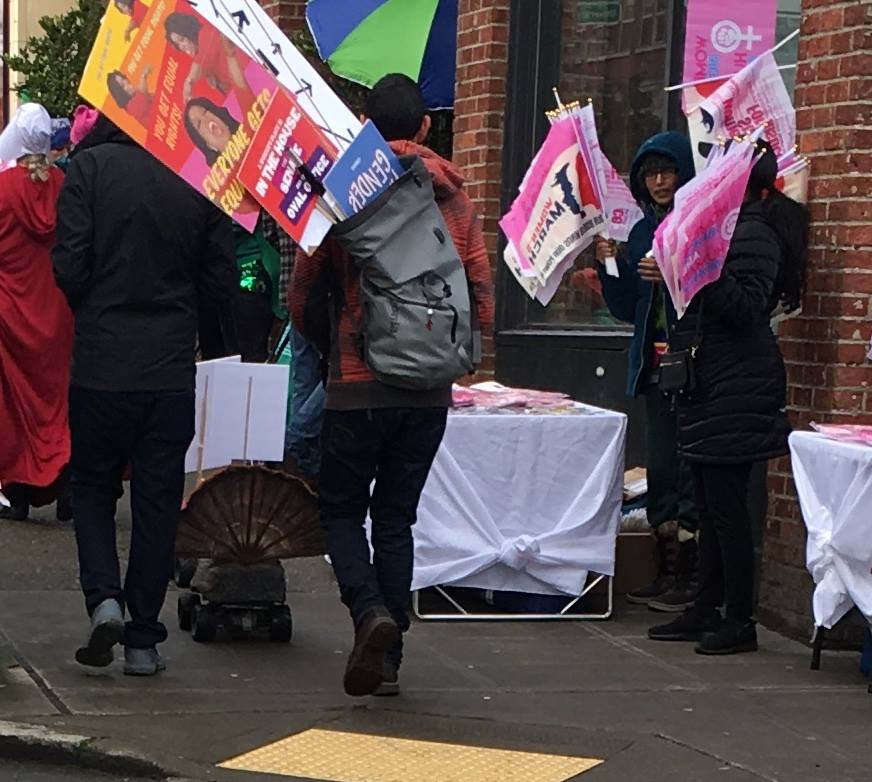
WHAT NOW?
Do low numbers and an organization suffering from bad management mean this movement was a failure? Not by a long shot. The energy from 2016 will never be forgotten, especially to those that showed up.The thing to remember about energy is that it never stays in one place. It turns into:the inspiration for new initiatives the drive to run for office
the drive to run for office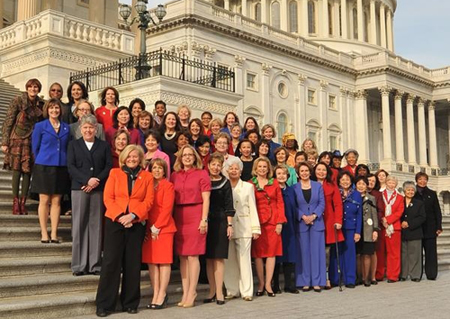 the courage to speak up against bad behavior, this year, so many to name but this picture, to me, was the most powerful representation of the #MeToo movement
the courage to speak up against bad behavior, this year, so many to name but this picture, to me, was the most powerful representation of the #MeToo movement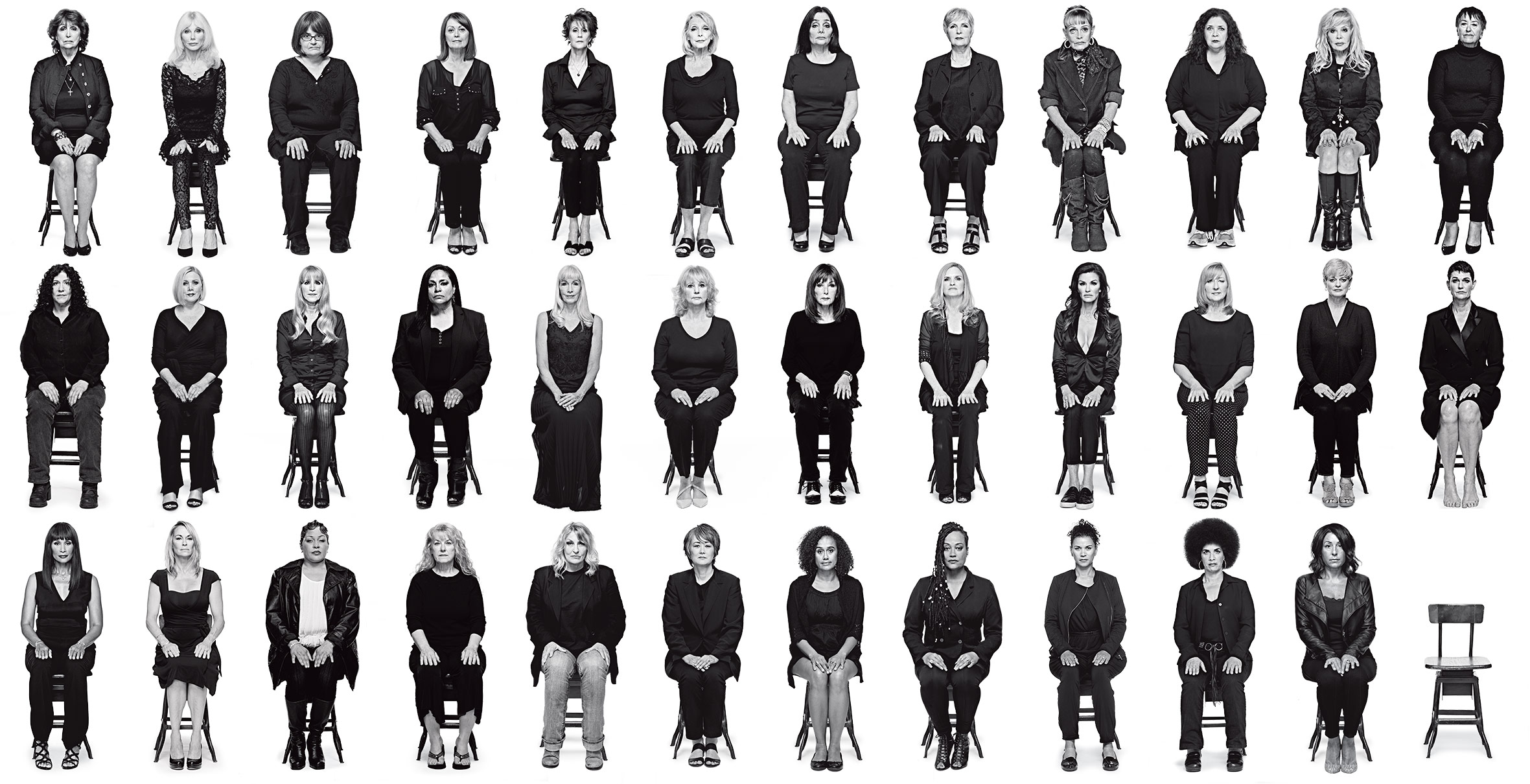 the anger to fight for what is right and the courage to find your voice
the anger to fight for what is right and the courage to find your voice the belief that you can change what is possible for yourself and others
the belief that you can change what is possible for yourself and others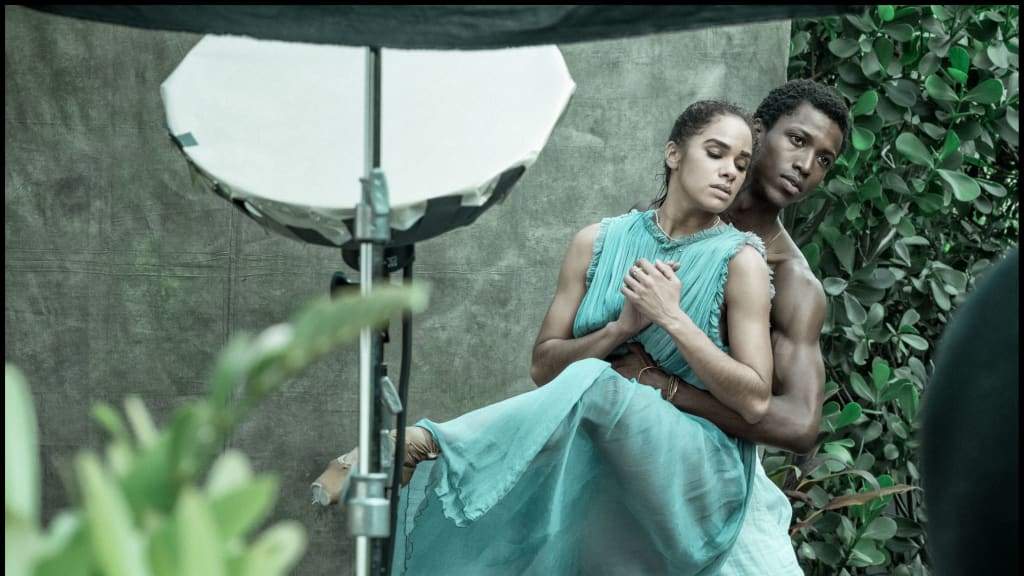 the insight to become a better ally -- will this by YOU?
the insight to become a better ally -- will this by YOU? So even if the women's march dwindles, that powerful, powerful, worldwide outcry for human rights was heard and it continues to inspire. I think it will become a memory like the Civil Rights marches of the 60s. But it's important to remember that a lot of movement came from that first march.
So even if the women's march dwindles, that powerful, powerful, worldwide outcry for human rights was heard and it continues to inspire. I think it will become a memory like the Civil Rights marches of the 60s. But it's important to remember that a lot of movement came from that first march.
"Women's rights are human rights, and human rights are women's rights." --Hillary Clinton
WHAT CAN YOU DO?
Marches are great, but sustaining change is better. Check out these orgs for ways to involve yourself in your community:
- Make America Dinner Again (M.A.D.A.) In a divisive time, a nationwide organization is bringing people of divergent views together over dinner — with intense, cathartic results.
- Living Room Conversations Living Room Conversations are a conversational bridge across issues that divide and separate us. They provide an easy structure for engaging in friendly yet meaningful conversation with those with whom we may not agree. These conversations increase understanding, reveal common ground, and sometimes even allow us to discuss possible solutions. No fancy event or skilled facilitator is needed.
- Attend Citizen University Citizen University is building a culture of powerful, responsible citizenship across the country.
- Look for Local Events via Seattle Times
- Become a student at the Community Police Academy Community participants will become familiar with various facets of the SPD and gain insight into law enforcement's role in the criminal justice system and the daily work of police employees. With increased understanding, Seattle's community and police can work together and achieve realistic solutions to neighborhood problems relating to crime, fear of crime, and neighborhood decay. This class is both fun and educational and often challenges the myths and images of law enforcement by providing a realistic view of police procedures.
- Volunteer Your Time. ACLU
- Donate Your Resources. ...
- Shop Locally.
- Join a Class or Group.
- Seek local experiences, support people doing creative projects.
- Organize Your Own Event.
